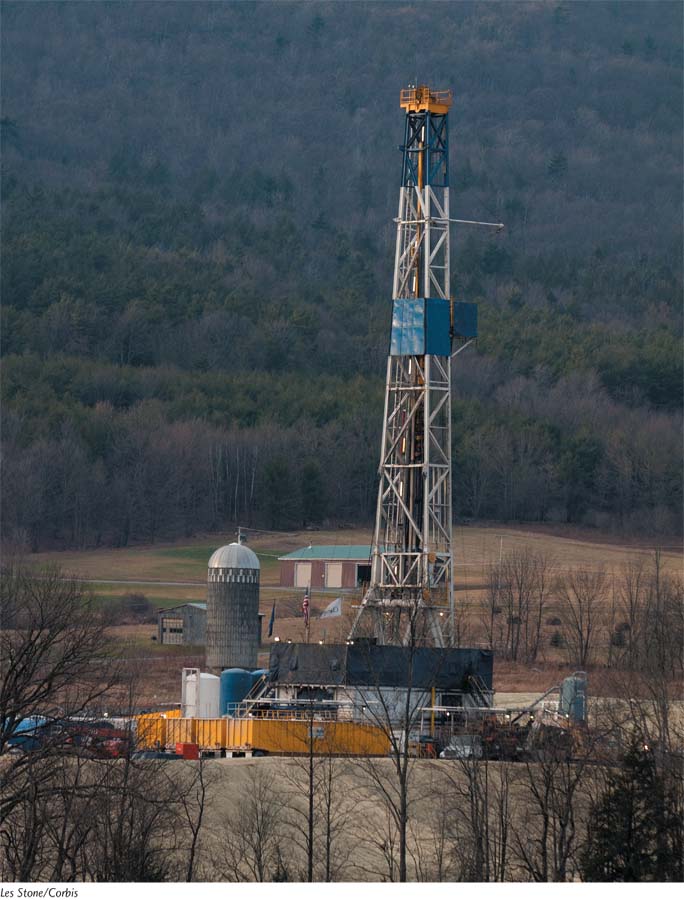Chapter Introduction
xxvi
chapter 1
Environmental Science: Studying the State of Our Earth

1
Module 1 Environmental Science
Module 2 Environmental Indicators and Sustainability
Module 3 Scientific Method
To Frack, Or Not to Frack
The United States—
Footage of flames shooting from kitchen faucets became popular on YouTube.
Fracking Hydraulic fracturing, a method of oil and gas extraction that uses high-
Due to advances in technology, oil and mining companies have recently increased their reliance on fracking. Fracking, short for hydraulic fracturing, is a method of oil and gas extraction that uses high-
2
However, reports soon began appearing both in the popular press and in scientific journals about the negative consequences of fracking. Large amounts of water are used in the fracking process with millions of gallons of water taken out of local streams and rivers and pumped down into each gas well. A portion of this water is later removed from the well and must be properly treated after use to avoid contaminating local water bodies.
A variety of chemicals are added to the fracking fluid to facilitate the release of natural gas. Mining companies are not required to publicly identify all of these chemicals. Environmental scientists and concerned citizens began to wonder if fracking was responsible for chemical contamination of underground water and, in one case, the poisoning of livestock. Some drinking-
Scientists have begun to assess how much natural gas escapes during the fracking and gas extraction process. As we will learn in Chapter 19, methane is a greenhouse gas and is much more efficient at trapping heat from Earth than carbon dioxide, which is the greenhouse gas most commonly produced by human activity. As the number of potential environmental issues associated with fracking began to increase, environmental scientists and activists began to ask whether fracking was making the greenhouse problem and other environmental problems worse. By 2014, it appeared that opponents of fracking were as numerous as supporters.
Certainly, using natural gas is better for the environment than coal, though using less fossil fuel—
The story of natural gas fracking provides a good introduction to the study of environmental science. It shows us that human activities that are initially perceived as causing little harm to the environment can in fact have adverse effects, and that we may not recognize these effects until we better understand the science surrounding the issue. It also illustrates the difficulty in obtaining absolute answers to questions about the environment and demonstrates that environmental science can be controversial. Finally, it shows us that making assessments and choosing appropriate actions in environmental science are not always as clear-
Sources: S. G. Osborn et al., Methane contamination of drinking water accompanying gas-
The process of scientific inquiry builds on previous work and careful, sometimes lengthy, investigations. For example, we will eventually accumulate a body of knowledge on the effects of hydraulic fracturing of natural gas, but until we have this knowledge, we will not be able to make a fully informed decision about the policies of energy extraction. In the meantime, we may need to make interim decisions based on incomplete information. This uncertainty is one feature—
To investigate important topics such as the extraction and use of fossil fuels, environmental science relies on a number of indicators, methodologies, and tools. This chapter introduces you to the study of the environment and outlines some of the important foundations and assumptions you will use throughout your study.